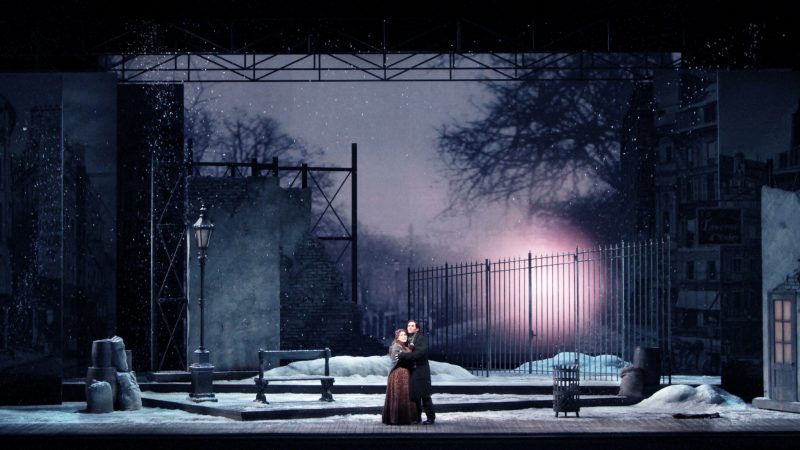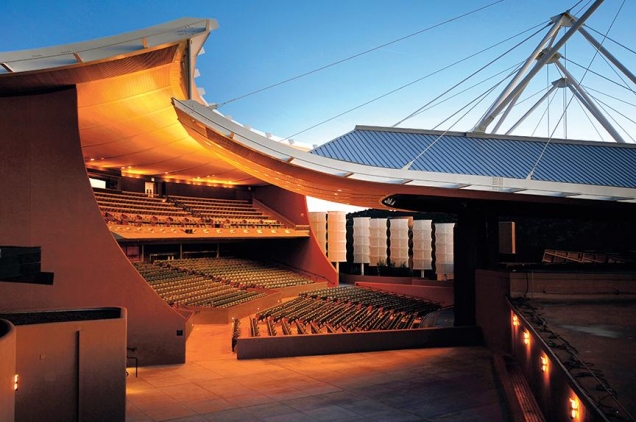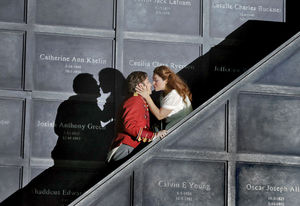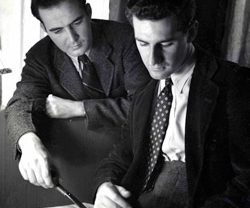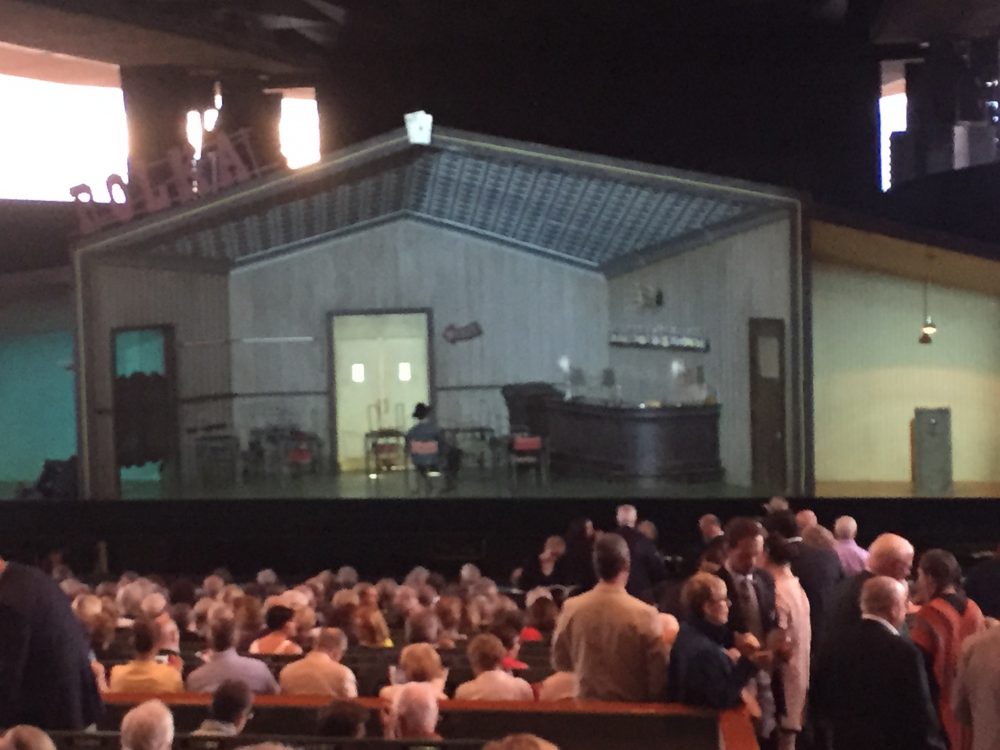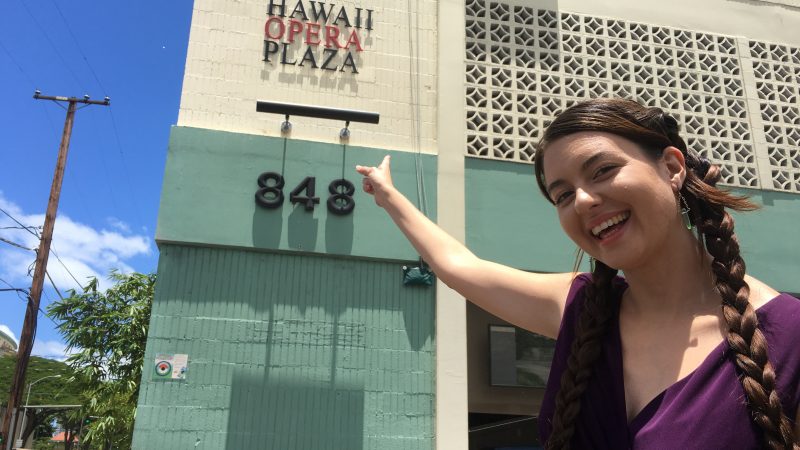Honolulu, Hawaii – Single Tickets to the 2016-17 Opera Season – Opera with Passion will be available for purchase from Hawaii Opera Theatre (HOT) on September 1, 2016. This season will highlight the extraordinary range of opera as an art-form, from the romantic beauty of Puccini to the modern-day relevance of Three Decembers world-class productions and internationally renowned stars.
Puccini’s La Bohème/ Blaisdell Concert Hall / Oct. 14, 16, & 18, 2016
La Bohème is one of the most romantic love stories ever to grace the operatic stage, and is arguably Puccini’s most popular work, alongside his iconic Madama Butterfly. Set in Paris during the start of 1830s, La bohème tells the story of four young artists living in a garret and pursuing an idealistic “bohemian” lifestyle. When Rudolfo the poet meets Mimi they fall in love, but the poverty of their lifestyle affects her health and after a whirlwind romance she tragically dies. From the romance of their first meeting in Act One, to the joyous celebration of Café Momus on Christmas Eve with the delightful Musetta, the opera moves to the soulful quartet of Act Three, which leads to the tragedy of Act Four. Throughout the opera we hear some of Puccini’s best-loved melodies.
Previn’s A Streetcar Named Desire / Blaisdell Concert Hall / Jan. 27, 29, & 31, 2017
Andre Previn’s transformation of Tennessee Williams classic play. Set in New Orleans in the 1940s, Blanche DuBois arrives at the home of her sister, Stella, and husband, Stanley Kowalski after suffering the loss of her ancestral home and job. Skeptical of the story, Stanley grows infuriated by Blanche losing his wife’s birthright, and sets out to reveal the truth behind the circumstance. The conflict between the two unfolds with tragic and violent consequence.
HOT’s production stars Jill Gardner (Tosca 2013) as Blanche and Ryan McKinny (The Dutchman 2015) as Stanley. Mark Morash conducts.
Heggie’s Three Decembers / Hawaii Theatre / March 24, 25, & 26, 2017
Composed by Jake Heggie (Moby Dick), Three Decembers is based on a play by Terrence McNally, about Broadway Star, Madeline Mitchell, as she enters the twilight of her career and life. The story unfolds with Madeline, estranged from her children, sharing a secret she has kept, and over three decades hidden truths are revealed as they struggle to find their identities as part of a family and in their lives. Madeline will be performed by Frederica von Stade in what the Houston Chronicle called “the role of a lifetime” for the opera legend when she created the role in 2008. HOT will present Three Decembers throughout the State of Hawaii, making its company debut on the Big Island (March 29) & Kauai (March 31), with a return to Maui (April 1).
Offenbach’s Tales of Hoffmann / Blaisdell Concert Hall / Apr. 21, 23, & 25, 2017
The Tales of Hoffmann, composed by Jacques Offenbach takes place over a series of flashbacks, as the famous German poet Hoffmann tells the story of his three great failed romances at a bar, ruining his fourth great romance in the process. Each woman represents a part of the whole that he is seeking: Olympia, the beautiful doll, Antonia, the singer and Giulietta, the courtesan. As his current love, the prima donna Stella, abandons him in despair, Hoffmann once more dedicates himself to his true love: poetry.
Single Ticket prices range from $29 – $130 (Blaisdell Concert Hall productions) and $30 – $90 (Hawaii Theatre). To purchase Single Tickets online visit HawaiiOpera.org or call the HOT Box Office at (808) 596-7858. New Subscriber Specials and Single Ticket Discounts (Group, Military, & Student) are available through the HOT Box Office.
-#########
Since 1961, Hawaii Opera Theatre (HOT), formerly a division of the Honolulu Symphony Society and incorporated in 1980, has served to enhance the quality of life in Hawaii by presenting opera performances of the highest standards, while maintaining fiscal responsibility. Through three productions annually in the Neal S. Blaisdell Concert Hall, HOT offers opera to almost 20,000 residents and visitors each season thereby increasing the public’s awareness and exposure to opera as a multi-media art form.
HOT’s educational programs for youth serve as both catalyst and active participant in the artistic education of Hawaii’s youth. Opera for Everyone provides a special performance of each opera for a large and enthusiastic audience of students. Opera Express takes operas specially adapted operas, into elementary and middle schools with special tours to all neighbor islands. HOT’s Opera Residency program takes our education and production staff members into an elementary school to work with students and teachers to compose an opera production centered around curriculum components. Adult education is offered with Opera Highlights, a non-credit course at the University of Hawaii; Opera Previews, at the Honolulu Museum of Art; pre-performance Lanai Lectures on the Neal S. Blaisdell Concert Hall lanai; and other presentations at stores or shopping centers.
Led by Artistic Director, Henry Akina, and General Director Simon Crookall, HOT employs local musicians. Auditions are held, generally in NY, to cast principal roles from mainland, European, Asian and local singers. The Opera Chorus is a local volunteer organization.

